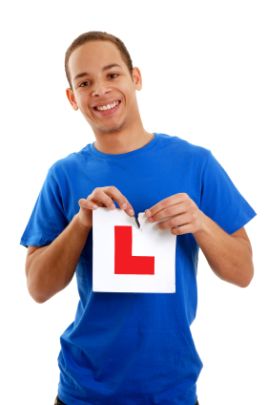Tips on braking on snow and ice
Braking on snow and ice takes a lot longer than it does on a normal road in ordinary conditions. But you might be very surprised at how long it can take.
Infact tests have shown that it can take over 10 times the distance to stop on snowy and icy conditions than it does in ordinary road conditions! This is because there is so much less grip between the wheels and the road, and therefore it takes a much greater distance to reduce your speed when travelling over it in those conditions.
This is why pile ups are so common in these sort of conditions, because cars following are not able to brake in time with the stopping distances being increased so much so they all go in the back of each other.
When you do brake, you must also be gentle - because anything else would lead to the wheels locking. A good technique is to start braking earlier than you would normally and make it gentle, then change down gear into a lower gear sooner than you normally would.
Note that if conditions are bad of course the first thing to consider is whether a journey is absolutely essential; if not then turn back and in certain conditions even if you think the journey is essential it is best not to try and make it at all.
Related Articles...
Theory test case studies
One of the relatively new elements added to the driving theory test is what is called the case study element. This was introduced on 28th September 2009, and there is one case study in the theory...
How to deal with bus lanes
If you see a bus lane then you will see a range of different attitudes from drivers. Mainly there will be frustration that they are stuck in a huge queue and there is a perfectly good lane that is...
Your vehicle and driving
There is a lot to take in when you are learning to drive and when you are preparing for the driving theory test. Whilst a lot of it is common sense there is a considerable amount of information you...
What to do when you sell a vehicle
When you sell a vehicle, there are some things that you have to do straight away. As soon as the vehicle is sold you have to tell the DVLA, which stands for the Driver and Vehicle Licensing Agency,...
The New Drivers Act
The New Drivers Act is legislation that applies to those who have just passed their test and are categorised as new drivers, which in this legal definition refers to the first two years of passing...
What to do at a roundabout
Roundabouts come in all shapes and sizes, but the basic rules that govern roundabouts are simple.
However that doesn't stop people interpreting the rules and indicating and lines in all sorts...
What are driving offences
Driving offences are what happens when you do not meet your obligations as a road user.
This could be something like not having the correct documentation that you require or something much...
Your car and the lights on it
We are all used to seeing cars in the dark, and also seeing their indicators in the day to communicate to other car drivers. But what must you ensure with regard to the lighting of your...
Tips on passing your theory test
It is up to each individual who takes a theory test to do the necessary work and preparation to put themselves in the best position to pass the test.
Rather than attempting to 'cram' the night...
Test your Driving Theory
Want to test your driving theory knowledge? We have all the multiple choice revision questions for car drivers together with a range of hazard perception clips.
With our unique feedback and...
Back to home page of driving theory test questions

